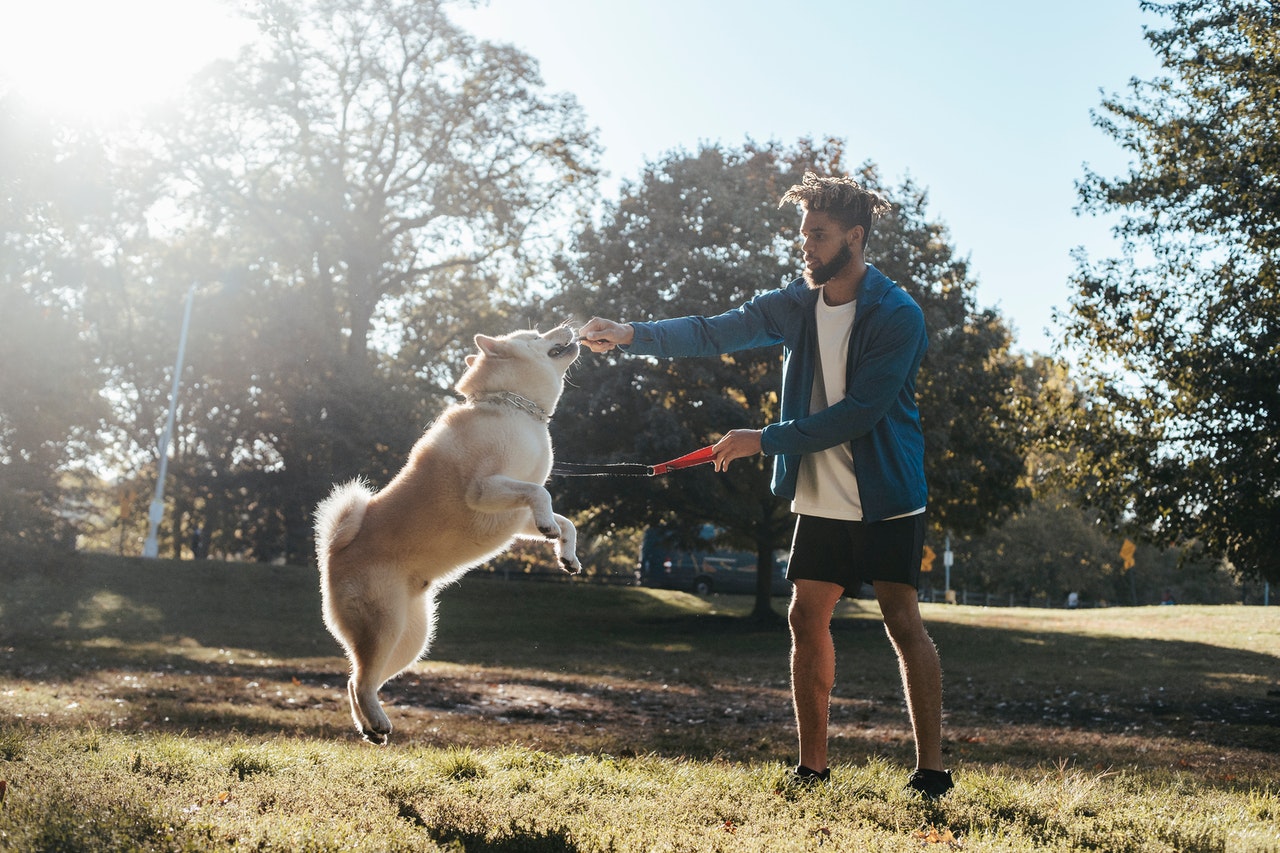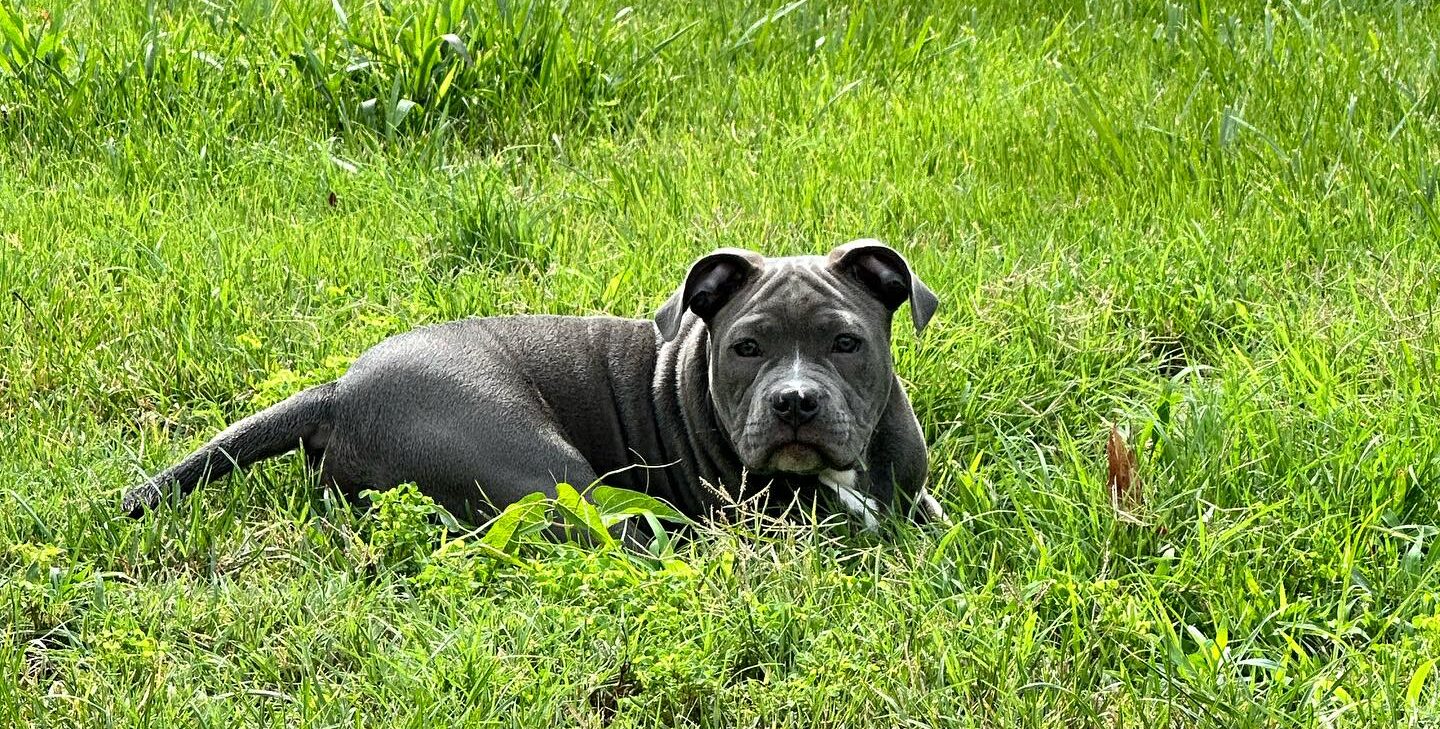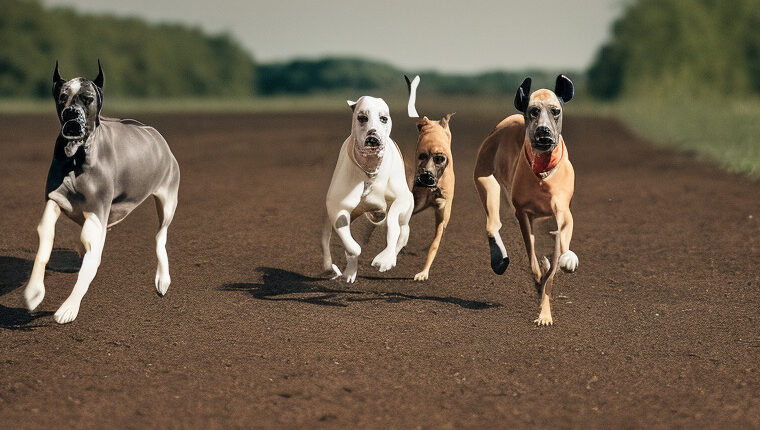Last Updated on February 13, 2023
It is common knowledge that Dachshunds is susceptible to back problems. and this is really due to the dog’s unique elongated body shape. And the direct cause of it can also be attributed to a unique condition called the Intervertebral Disc Disease, or in short IVDD.
What Is IVDD
 IVDD is essentially the compression of the spinal cord due to the lack of jelly-like properties in the inner nucleus pulposus that is present in the dog’s spine. When the fluid is lacking, the disc will slip and subsequently compressing the spinal cord together. When the disc starts to compress and deteriorate, they become prone to bulging when there are instances of uncushioned impact. Activities such as a hard landing or even jumping can result in IVDD.
IVDD is essentially the compression of the spinal cord due to the lack of jelly-like properties in the inner nucleus pulposus that is present in the dog’s spine. When the fluid is lacking, the disc will slip and subsequently compressing the spinal cord together. When the disc starts to compress and deteriorate, they become prone to bulging when there are instances of uncushioned impact. Activities such as a hard landing or even jumping can result in IVDD.
Note that when the jelly in the affected disc burst, there are two ways that it can go, which is either upward or from side to side. while it is ok for the disc to go side to side, what makes it worse is when the disc goes straight up instead. When this happen, the spinal cord is being compressed as the discs are being forced together. As a result, your dog will feel pain, discomfort as well as the total loss of any motor control at all. In extreme cases, the dog might experience complete paralysis too.
Certain breeds like the Dachshunds, unfortunately, are more susceptible to his problem, and hence IVDD in Dachshunds is a pretty common problem. In fact, IVDD affects about 25% of all Dachshunds, though they are not the only dog breed to suffer from this condition. Typically, dogs with a longer back will be susceptible to this disease too.
When Does IVDD First Affect The Dachshund
For the case of Dachshund, it is very common for them to get the IVDD from ages 3 and above. Interestingly, if the Dachshund does not get IVDD by the age of 7, the possibility of them having the problem is reduced dramatically. Note that this is just a statistic and you should always take it with a pinch of salt. The possibility of the dog getting IVDD is also dependant on their activity level too.
How To Prevent IVDD in Dachshunds
As the IVDD in Dachshunds is a fairly common problem, we should find means and ways to help prevent IVDD from hurting our dogs. There are several ways at which you can do this to solve the Dachshund’s back problems.
1. Use Ramps Whenever Possible For Your Dachshunds
This is perhaps one of the most understated ways at which you can prevent IVDD in Dachshunds. As their body structure does make climbing up steps a chore for them, you can easily rectify this by using ramps that you can easily buy from Amazon. There are a few of them around, and one of the best dog ramps for your Dachshunds is the Foldable Pet Steps/Stairs by Best Pet Supplies.
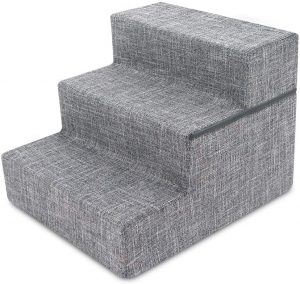 This dog ramp for Dachshunds is able to help your dog to reach up onto the bed or even the couch easily without needing to strain its back at all. The cushioning provided on the flight of stairs does help to cushion the impact on your dog’s legs too, which is really what makes this our top choice. Made with high-quality materials, this flight of stairs will surely be the top choice for you, for your dog.
This dog ramp for Dachshunds is able to help your dog to reach up onto the bed or even the couch easily without needing to strain its back at all. The cushioning provided on the flight of stairs does help to cushion the impact on your dog’s legs too, which is really what makes this our top choice. Made with high-quality materials, this flight of stairs will surely be the top choice for you, for your dog.
One added bonus is that this flight of stairs is completely foldable, and hence you can easily keep and store it away to save up some space in your house. Not to worry about the colours too as there are many different colours and patterns of this top ramp for Dachshunds too.
2. Use Puppy Gates
Yes, you heard it right! In order to limit the probability of your Dachshunds climbing up the long flight of stairs that you have at home, why not install a puppy gate to ensure that the area is cordoned off? We have made some great reviews of some of the best puppy gates that you can find, so take your time and choose the one that fit your needs the most.
3. Dachshunds Back Brace
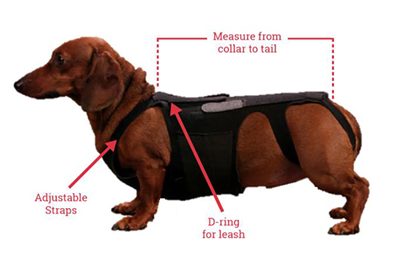 One good way to help support your Dachshunds back is by getting a back brace that is designed for them, and the best one that you should get is the L’il Back Bracer Dog Back Brace for IVDD.
One good way to help support your Dachshunds back is by getting a back brace that is designed for them, and the best one that you should get is the L’il Back Bracer Dog Back Brace for IVDD.
The Lil Back Bracer is a truly orthopaedic support brace for dogs that really helps to provide support for dogs, especially if they have IVDD or other back injuries that they might have. It is a good item to purchase as a preventive measure too.
Some of the benefits include:
- Help to stabilize the entire body, with a focus on the back
- Drastically reduces pressure on the dog’s spine
- Helps to provide a calming effect on the dog
- Can double up as a dog harness
- Uses medical grade fabric that provides additional comfort to the dog
- Best orthopaedic support garment for dogs suffering from IVDD or other back injuries
It is proven that the L’il Back Bracer Dog Back Brace for IVDD do help to provide extreme support for the dog’s back, and it had helped speed up many dog’s recoveries from injuries as well as to prevent further damage to the body’s overall support system. It is highly recommended for you to purchase this Dachshund’s back brace for your dog if you wish to prevent IVDD for your Dachshund.
4. Carry Your Dog Instead Of Letting Them Climb Stairs
This is another no brainer actually. A good way to prevent IVDD from happening to your dog is by carrying them on and off the stairs whenever you can. In fact, prolonged climbing of stairs can put a strain on the dog’s back. Similarly, when your Dachshund is climbing down the stairs, it does take a bit of jumping too, and as we have established earlier, jumping does strain your dog’s back due to the impact of the activity.
5. Provide a Comfortable Bed
Providing a comfortable bed is an essential part of helping your Dachshund with back pain. A bed with a soft surface can help relieve pressure on their spine and joints. It’s also important to make sure the bed is the right size for your Dachshund. A bed that is too small can cause them to curl up in uncomfortable positions, which can exacerbate their back pain.
6. Control Your Dachshund’s Weight
Dachshunds are prone to back pain, and carrying extra weight can put additional strain on their spine and joints. Controlling your Dachshund’s weight can help alleviate back pain and prevent it from recurring. Your veterinarian can recommend a healthy diet and exercise plan for your Dachshund.
7. Provide Physical Therapy
Physical therapy can help alleviate back pain in Dachshunds. Your veterinarian can recommend exercises that can help improve your Dachshund’s mobility and relieve their pain. Some common exercises include walking, swimming, and stretching.
What To Do If Your Dog Has IVDD
Granted, you have tried means and ways to prevent your Dachshunds from having IVDD, but for some reason or another, IVDD still strikes your dog. In such cases, here are some of the pointers that will be important to you and your dog.
Consult A Vet
If you are unsure about what you should do when your Dachshund is experiencing back problems, you can always bring the dog for a consultation with the vet. Typically, there are 5 levels of back problems that the Dachshunds can get. At the lowest level, it will be the Daschund experiencing back pain. As we go further down the spectrum, the severity level will be directly proportional to the level of pain, with the dog’s problems graded at level 5 when it suffers from complete paralysis.
In general, if your dog is showing signs of being in pain, and the pain is not isolated just on the back, it will be necessary for you to bring to your dog for a consultation with a veterinary neurologist so that they can be properly treated.
Immediate Surgery
If, after consultation with the veterinary neurologist, it is recommended that you admit your dog for immediate surgery, we will highly urge you to do so as any further delay in treatment will mean that your Dachshunds will have a lower chance of recovering.
If you would like to, you can find out more information from the video below.
Provide a Comfortable Environment
During your dog’s recovery from IVDD, it is important to provide a comfortable and supportive environment for them. This may include providing a soft bed or crate with plenty of padding, limiting your dog’s activity to prevent further injury, and providing physical therapy exercises as recommended by your vet.
Maintain a Healthy Weight
Maintaining a healthy weight is important for all dogs, but it is particularly important for dogs with IVDD. Extra weight can put additional strain on your dog’s spine and exacerbate the condition. Speak to your vet about an appropriate diet and exercise plan for your dog to help them maintain a healthy weight.
Consider Alternative Therapies
In addition to traditional veterinary treatments, there are a number of alternative therapies that may help your dog with IVDD. These can include acupuncture, chiropractic, massage therapy, and hydrotherapy. It is important to speak to your vet before starting any alternative therapies to ensure they are safe and appropriate for your dog.
Be Vigilant
IVDD is a chronic condition that can recur in dogs, even after successful treatment. It is important to be vigilant for signs of recurrence, such as a change in your dog’s gait or reluctance to move, and to take them to the vet immediately if you suspect a problem.
In conclusion, IVDD can be a painful and debilitating condition for dogs, but with proper diagnosis and treatment, most dogs can make a full recovery. By following your vet’s treatment plan, providing a supportive environment, maintaining a healthy weight, considering alternative therapies, and being vigilant for signs of recurrence, you can help your dog lead a happy and healthy life.
Conclusion
Back pain is a common problem that affects many Dachshunds. Knowing the signs of back pain, seeking veterinary care, providing a comfortable bed, controlling your Dachshund’s weight, using a harness instead of a collar, providing physical therapy, and considering surgery are all ways to help your Dachshund with back pain. By taking these steps, you can help your furry friend feel more comfortable and live a happy, healthy life.
 Dog N Treats All dogs deserve to be pampered
Dog N Treats All dogs deserve to be pampered

